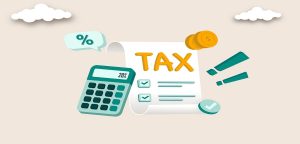The Indian taxation system has evolved tremendously over the years to ensure greater transparency and compliance among businesses and individuals alike. One such addition to the Income Tax Act is Section 135A, introduced with a specific objective to empower income tax authorities and improve the efficiency of their operations. But what exactly does 135A of the Income Tax Act entail, and how does it impact businesses?
Let’s break it down in simple terms and understand how this provision affects taxpayers and what it means for businesses using tools such as inventory management software and online billing software.
Understanding Section 135A of Income Tax Act
Section 135A was inserted into the Income Tax Act via the Finance Act of 2021. It empowers income tax authorities to carry out “faceless tax surveys”. The goal is to reduce physical interface between the taxpayer and the tax department, promote transparency, and ensure better accountability.
Here’s what the section essentially covers:
- Enables faceless surveys for gathering information for verification of expenditure, income, or assets.
- Ensures tax officials do not misuse power by conducting arbitrary visits or checks.
- Encourages a data-driven and technology-enabled approach to tax enforcement.
This means that now, tax surveys can be conducted without physical presence at a business premise, making the whole process more streamlined and less intimidating for taxpayers.
Why Section 135A Matters in Today’s Digital Business Landscape?
With the increasing digitization of businesses, especially SMEs, authorities now rely more on data than traditional manual inspections. That’s where 135A of the Income Tax Act becomes a key player.
Let’s take a real-world example.
Imagine a retail business using Margbooks, a modern accounting and inventory software, for its day-to-day operations. Margbooks tracks sales, purchases, stock levels, and expenses and generates GST-compliant invoices via its online billing software module. All the data is stored securely and can be accessed digitally.
Now, if the Income Tax Department wants to verify the expenditure patterns or revenue declared by the business, it can initiate a faceless survey under Section 135A. Using the digital data from Margbooks, the entire process can be carried out smoothly, without the need for a physical visit, thereby ensuring:
- Minimal disruption to business operations
- Accurate data verification
- Faster resolution of queries
Key Features of Section 135A That Empower Income Tax Authorities
Here’s how 135A of Income Tax Act strengthens the hands of the tax department:
1. Faceless Surveys
This provision enables surveys to be carried out through automated systems. It removes subjectivity and reduces the possibility of harassment.
2. Centralised Allocation
Cases are selected and allocated using a centralised system, which ensures that the surveys are not targeted or biased.
3. Use of Technology
Officials have access to digital records, analytics tools, and transaction data – making surveys more effective and rooted in facts.
4. Confidentiality and Privacy
Since no physical visit is required, the confidentiality of the business is protected, which is crucial for maintaining brand reputation.
The Role of Technology in Supporting Tax Compliance
Businesses today are more reliant on digital tools to maintain compliance and streamline their operations. Platforms such as Margbooks play a critical role in this landscape by:
- Automating inventory tracking: Know what’s selling, what’s not, and how much stock is lying idle.
- Maintaining billing records: The online billing software ensures that GST rules are followed and every invoice is traceable.
- Generating real-time reports: Whether it’s a profit and loss statement or stock summary, reports are just a click away.
- Helping with audits and surveys: When authorities request data under Section 135A, businesses using Margbooks can provide accurate reports instantly.
How Should Businesses Prepare?
If you’re a business owner, here’s what you can do to stay prepared and compliant:
- Use reliable inventory management software to track all purchases and sales.
- Switch to online billing software, Margbooks, that ensures every transaction is recorded digitally and is easy to retrieve.
- Maintain transparency in your accounting and taxation processes.
- Stay updated on the latest tax provisions and legal requirements.
Final Thoughts
The introduction of Section 135A of Income Tax Act is a strong step towards promoting responsible business practices and reducing tax evasion. While it empowers tax authorities, it also encourages businesses to embrace digitisation.
By integrating tools like Margbooks, which combines inventory management software and online billing software, businesses can not only maintain smooth operations but also stay on the right side of the law.
As India moves towards a more digital economy, adapting to these changes isn’t just a compliance requirement, it’s a smart business move.




